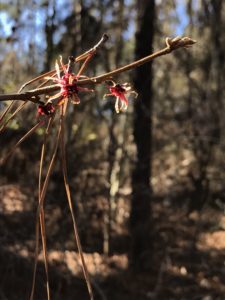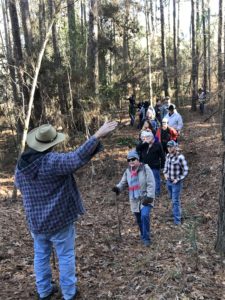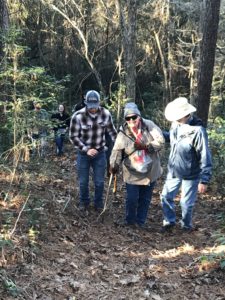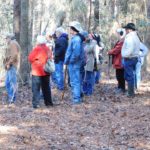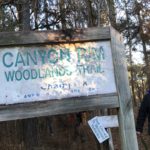The winter date was chosen so we could see the rare Bigleaf Witch-Hazel, Hamamelis ovalis, which was soon spotted and admired. Its winter blooms come in shades of red, orange and pink. Soon the trail curved to follow an old logging road last used by mule and ox-drawn wagons about a century ago, and we were able to view a cannon range used by Fort Polk trainees during World War II. Above the spectacular views at Deer Run Lookout, we saw a turpentine face on a longleaf pine stump that was used by collectors of turpentine in the 1920s.
Keith Stephens led the hike and was able to identify all of the trees with nothing but the bark in some cases, since many of these huge beauties were devoid of leaves this time of year. In addition to the huge beech, magnolia and loblolly pines, we saw large black cherry trees, black gum, sassafras, white oak, white ash, winter and summer huckleberry, American basswood, American hophornbeam, Ironwood, Georgia holly, Possumhaw, Carolina Buckthorn and Sweetleaf. Keith pointed out a White Oak stump that looked like a rock, explaining it wouldn’t rot because moisture couldn’t get inside.
The entire trail is about 1.6 miles, with some easy, moderate and more challenging terrain. There were fallen limbs across the path, and we discussed returning to do trail cleanup as a service project. In some places, feral hog activity made footing a challenge, and there were more than a few up and down grades to navigate. Canyon Rim is located on State Highway 87 in Mayflower, south of Hemphill, north of Burkeville. It is one of the sites on the Big Thicket Loop of the Great Texas Coastal Birding Trail known for Black and White Warblers, Louisiana Waterthrush, Blue-gray Gnatcatchers, Yellow-throated Vireo, and Red-eyed Vireo.
- James Pulliam
- Keith Stephens
- Sue Singletary, Robert Webb, Joanie Kochanek
- Signs Mark Historic Sites
- The Group
- Discussing Finds
- Admiring the Scenery
- Examining Witch-hazel
- Exploring
- ID’ing Trees
- Scenic Views
- The Group
- Danielle Horton
- Turpentine Face
- Resting
- One of Many Springs
- One of Many Hollow Trees
- We Made it!


